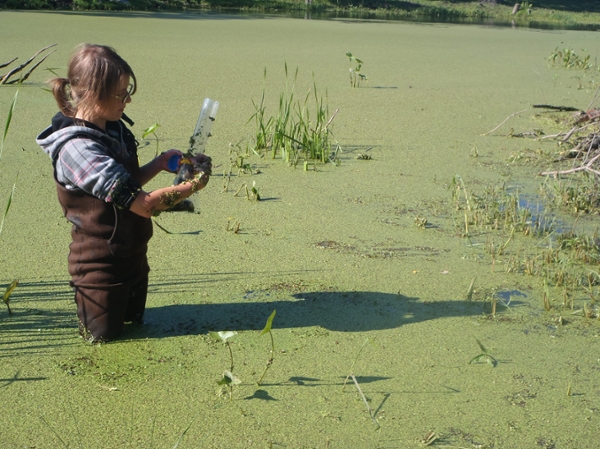Agricultural Reservoirs
A research group working on budgeting and minimizing greenouse gas emissions associated with agricultural reservoirs.
What We Do

On the prairies, there is a growing interest in keeping water on the land in wetlands and reservoirs to mitigate flooding in wet years, maximize benefits from scarce water in dry years, and attain environmental benefits in terms of water quality and habitat. Our work investigates agricultural reservoirs used as a beneficial management practice (BMP) in southern Manitoba to reduce peak flows, prevent flooding and erosion, and provide a water supply for agriculture.
Our team of Master's students and undergraduate research assistants based in the Global Institute for Water Security and the School of Environment and Sustainability at the University of Saskatchewan is establishing full annual greenhouse gas emission (GHG) budgets for agricultural reservoirs in the South Tobacco Creek watershed to understand the importance of these features in an agricultural landscape. We are investigating the effect of water drawdown rate on methane emissions to understand how reservoir management can be used to mitigate GHG emissions. The team is also assessing the importance of controlling nitrogen runoff to minimize nitrous oxide emissions from these systems.
Our work will yield recommendations for siting and management of agricultural reservoirs to minimize GHG budgets. We also envision our research leading to inclusion of water storages in whole-farm GHG models. Ultimately this project will enable GHG emissions to be integrated into more holistic assessment of the use of agricultural reservoirs as a best management practice for managing water supplies, and mitigating downstream nutrient loads.
Funding
Global Institute for Water Security

